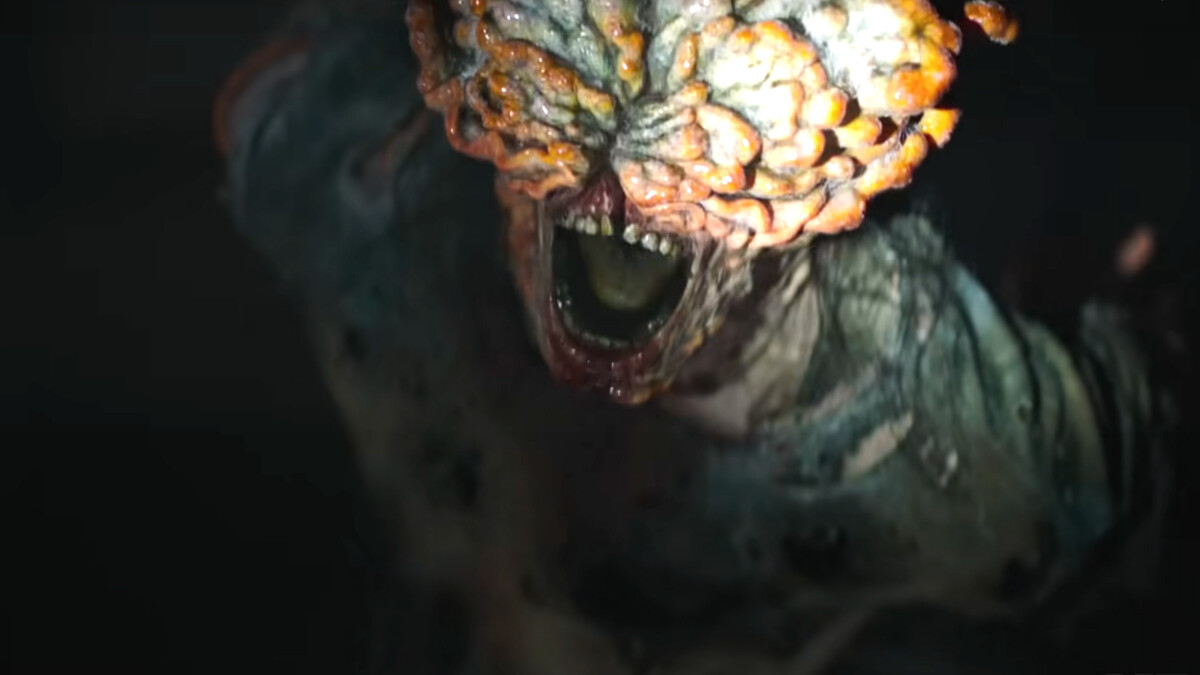The 2nd episode of “The Last of Us” showed us the first infected. We’ll tell you which types of fungus-infested zombies there are and how they can become dangerous for our heroes.

The Last of Us – Episode 2: The Clickers became aware of Joel and Ellie (Credit: Liane Hentscher/HBO)
- Episode 2 of “The Last of Us” plunges us into a true nightmare as Joel, Ellie and Tess continue to flee Boston.
- Your encounter with a Highly Infected is not only terrifying and spooky, but also raises some questions.
- Do all people infected by the fungus look like this, or are there other types?
Wow discount: “The Last of Us” and more 6 months for 7.99 euros per month.❯
NETZWELT may receive a commission from the retailer for links on this site. More info.
In the second episode of “The Last of Us,” Ellie, Tess, and Joel drift farther and farther from the Boston quarantine zone. There they meet the first highly deformed infected, which the HBO show did a fantastic job of portraying.
As more, more dangerous enemies are definitely bound to appear as the story progresses, it’s time to take a closer look at the various infected found in The Last of Us video games. What characterizes them, what are their strengths and weaknesses, and how many more of them will we see in season one?
The runners
People who contract the Cordyceps fungus are mostly doomed to a worse fate than death. Within hours of coming into contact with the fungus or being bitten by an infected person, the fungus takes control of their mind and body.
Those affected do not yet have fungal growths like other types of infected, but are still extremely dangerous and aggressive. They often hold their heads and roar and howl in pain, a last remnant of their old selves. The sprouting tendrils of mushrooms can be seen from their mouths and they lack any instinct of self-preservation. They have become slaves to the fungus.
With a direct hit to the head and the destruction of the brain, they are comparatively easy to incapacitate. However, they often appear in groups, making them a serious threat. Since their bodies have not yet been completely deformed by the fungus, they are extremely fast and agile, as well as being highly aggressive. Hence their nickname “Runner”. During the eruption, millions of them descended upon the cities falling into chaos.
The stalkers
The Stalkers are a variation of the Runners who have been under the influence of the Cordyceps fungus infection for several months. They are thus linked to the fungal roots underground, which Tess explains to Ellie serve as the “hive brain” for all infected and can control individual infected in groups.
The stalkers are also showing the first signs of fungal growths on their bodies, especially in the facial area. However, they are not yet blind and like to ambush their victims.
The clickers
The clicker infected species is the most dangerous Ellie, Joel and Tess have encountered yet. Although Ellie is immune to the fungal infection itself, unlike the others, she can still be torn apart by the superhuman infected. Infected victims evolve from runners to clickers after a few years.
The fungus and its outgrowths take over all parts of the body, so that not much remains of humans and the clickers are more like a walking mushroom monster. They are completely blind as their head was torn apart by the fungus and now looks like a mushroom cap.

The Last of Us: Cordyceps fungus infected (Source: HBO / Screenshot: Netzwelt)
Instead, like bats, they use sound to orient themselves. They make clicking noises (hence their apt name) and have extremely good hearing. Their appearance is absolutely hideous and they are also very resistant to firearms. Joel learns this firsthand at the museum when he fires multiple shots at a clicker without doing much damage to it.
The only way to take out a clicker is to destroy the protective fungal growth on its head and the underlying brain with a well-aimed hit. They often travel in small groups. Some survivors also believe they are coordinating their attacks or are being controlled by the fungus.
The Bloaters
The final evolutionary stage of the infected are the bloaters. These gigantic monsters are among the most dangerous mushroom creatures around. After decades of exposure to the fungus, infected people are slowly morphing into the spore behemoth we saw briefly in a The Last of Us trailer.
Their skin hardens, becoming scale armor-like, and their entire body is covered with the fungus, making them extremely resistant to conventional weapons. As a result, they are also slower and more sluggish than other infected people, at least a small advantage.
At least in the games, they could also throw poisonous spore bombs at Joel and Ellie. The show will likely forego that, though, as the HBO adaptation replaced spores as the fungus’s primary way of spreading with tendrils to avoid having the actors wear masks all the time.
Similar to clickers, the bloater’s head is reduced to a massive mushroom growth, leaving them blind and using low-pitched clicking sounds to orient themselves and hunt their prey. It will be exciting to see how Joel and Ellie survive their encounter with this mushroom behemoth of brute strength and mass.
| Rate The Last of Us | |
| genre | Drama, Action & Adventure, Sci-Fi & Fantasy |
| first airing | 01/07/2022 |
| First broadcast in Germany | 01/07/2022 |
| More sources | |
| network | HBO |
production | Sony Pictures Television, The Mighty Mint, Word Games, Naughty Dog, PlayStation Productions |
| squadrons |
Don’t miss anything with the NETWORK-Newsletter
Every Friday: The most informative and entertaining summary from the world of technology!
This page was created using data from Amazon, Netflix, MagentaTV, Sky Online, iTunes, The Movie Database, Fanart.tv, Warner Home Entertainment, Sony Home Entertainment or their respective production studios and/or publishers. In case of errors or problems please use the contact form.
